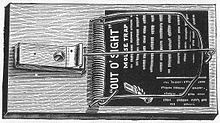
Ralph Waldo Emerson, who went by his middle name Waldo, was an American essayist, lecturer, philosopher, abolitionist and poet who led the Transcendentalist movement of the mid-19th century. He was seen as a champion of individualism and critical thinking, as well as a prescient critic of the countervailing pressures of society and conformity. Friedrich Nietzsche considered him "the most gifted of the Americans", and Walt Whitman referred to him as his "master".

Walden is a book by American transcendentalist writer Henry David Thoreau. The text is a reflection upon the author's simple living in natural surroundings. The work is part personal declaration of independence, social experiment, voyage of spiritual discovery, satire, and—to some degree—a manual for self-reliance.

A mousetrap is a specialized type of animal trap designed primarily to catch and, usually, kill mice. Mousetraps are usually set in an indoor location where there is a suspected infestation of rodents. Larger traps are designed to catch other species of animals, such as rats, squirrels, and other small rodents.

Mouse Trap is a maze video game developed by Exidy and released in arcades in 1981. It is similar to Pac-Man, with the main character replaced by a mouse, the dots with cheese, the ghosts with cats, and the energizers with bones. After collecting a bone, pressing a button turns the mouse into a dog for a brief period of time. Color-coded doors in the maze can be toggled by pressing a button of the same color. A hawk periodically flies across the maze, unrestricted by walls.
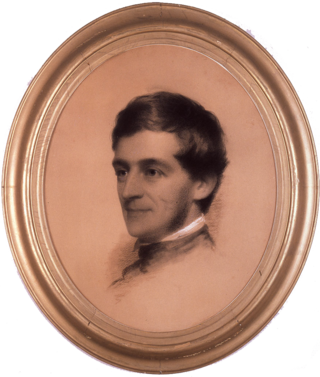
"Self-Reliance" is an 1841 essay written by American transcendentalist philosopher Ralph Waldo Emerson. It contains the most thorough statement of one of his recurrent themes: the need for each person to avoid conformity and false consistency, and follow his or her own instincts and ideas. It is the source of one of his most famous quotations:

Sleepy Hollow Cemetery is a rural cemetery located on Bedford Street near the center of Concord, Massachusetts. The cemetery is the burial site of a number of famous Concordians, including some of the United States' greatest authors and thinkers, especially on a hill known as "Author's Ridge."
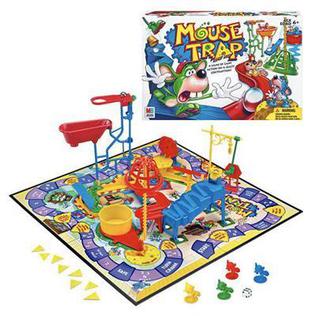
Mouse Trap is a board game first published by Ideal in 1963 for two to four players. It is one of the first mass-produced three-dimensional board games. Players at first cooperate to build a working mouse trap in the style of a Rube Goldberg machine. Then, players turn against each other to trap opponents' mouse-shaped game pieces.

"Build a Better Mousetrap" is the twenty-first episode of the third series of the 1960s cult British spy-fi television series The Avengers, starring Patrick Macnee and Honor Blackman. It was first broadcast by ABC on 15 February 1964. The episode was directed by Peter Hammond and written by Brian Clemens.

The phrase "scientia potentia est" is a Latin aphorism meaning "knowledge is power", commonly attributed to Sir Francis Bacon. The expression "ipsa scientia potestas est" occurs in Bacon's Meditationes Sacrae (1597). The exact phrase "scientia potentia est" was written for the first time in the 1668 version of Leviathan by Thomas Hobbes, who was a secretary to Bacon as a young man. The related phrase "sapientia est potentia" is often translated as "wisdom is power".

A timeline of United States inventions encompasses the ingenuity and innovative advancements of the United States within a historical context, dating from the Contemporary era to the present day, which have been achieved by inventors who are either native-born or naturalized citizens of the United States. Patent protection secures a person's right to his or her first-to-invent claim of the original invention in question, highlighted in Article I, Section 8, Clause 8 of the United States Constitution which gives the following enumerated power to the United States Congress:
To promote the Progress of Science and useful Arts, by securing for limited Times to Authors and Inventors the exclusive Right to their respective Writings and Discoveries.
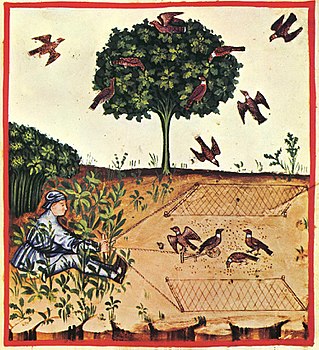
Animal trapping, or simply trapping or ginning, is the use of a device to remotely catch an animal. Animals may be trapped for a variety of purposes, including food, the fur trade, hunting, pest control, and wildlife management.

Nathan Read was an American engineer and steam pioneer.

In United States patent law, the flash of genius doctrine was a test for patentability used by the United States Federal Courts for just over a decade, beginning circa 1940.
Snow Excuse is a 1966 Warner Bros. Merrie Melodies cartoon directed by Robert McKimson. The short was released on May 21, 1966, and stars Daffy Duck and Speedy Gonzales.

John Henry Manny (1825–1856) was the inventor of the Manny Reaper, one of various makes of reaper used to harvest grain in the 19th century. Cyrus McCormick III, in his Century of the Reaper, called Manny "the most brilliant and successful of all Cyrus McCormick's competitors," a field of many brilliant people.

A timeline of United States inventions (1890–1945) encompasses the ingenuity and innovative advancements of the United States within a historical context, dating from the Progressive Era to the end of World War II, which have been achieved by inventors who are either native-born or naturalized citizens of the United States. Copyright protection secures a person's right to his or her first-to-invent claim of the original invention in question, highlighted in Article I, Section 8, Clause 8 of the United States Constitution which gives the following enumerated power to the United States Congress:
To promote the Progress of Science and useful Arts, by securing for limited Times to Authors and Inventors the exclusive Right to their respective Writings and Discoveries.

The transparent eyeball is a philosophical metaphor originated by American transcendentalist philosopher Ralph Waldo Emerson. In his essay Nature, the metaphor stands for a view of life that is absorbent rather than reflective, and therefore takes in all that nature has to offer without bias or contradiction. Emerson intends that the individual become one with nature, and the manner of the transparent eyeball is an approach to achieving it.
Mary Moody Emerson was an American letter writer and diarist. She was known not only as her nephew Ralph Waldo Emerson's "earliest and best teacher", but also as a "spirited and original genius in her own right". Ralph Waldo Emerson considered her presence in his life a “blessing which nothing else in education could supply”; and her vast body of writing—her thousands of letters and journal entries spanning more than fifty years—"became one of Emerson's most important books". Her surviving documents reveal the voice of a "woman who […] had something to say to her contemporaries and who can continue to speak to ours" about "the great truths that were the object of her life's pilgrimage".
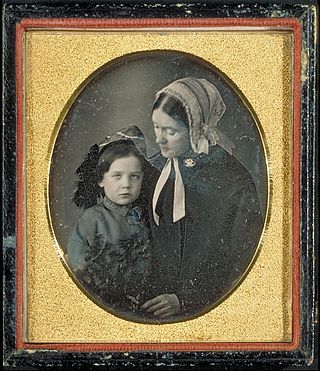
Edward Waldo Emerson was an American physician, writer and lecturer.

In 1882 on August 21, a man by the name of James Alexander Williams from San Saba County, Texas was filed a United States patent No.269,766. for a mousetrap incorporating a handgun, "by which animals who burrow in the ground can be deleted from existence".
